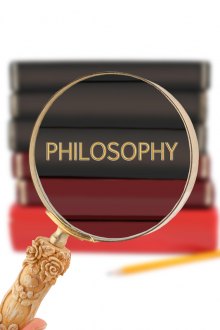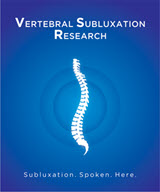General Chiropractic Council: Remove Philosophy from Chiropractic Education

The action of the GCC represents yet another assault on the teaching of philosophy in chiropractic and suggests that the authors do not understand what philosophy is. The irony of this is the apparent assumption that teaching philosophy is an option. As Ayn Rand wrote, "As a human being, you have no choice about the fact that you need a philosophy. Your only choice is whether you define your philosophy by a conscious, rational, disciplined process of thought and scrupulously logical deliberation, or let your subconscious accumulate a junk heap of unwarranted conclusions, false generalizations, undefined contradictions, undigested slogans, unidentified wishes, doubts and fears, thrown together by chance, but integrated by your subconscious into a kind of mongrel philosophy and fused into a single, solid weight: self-doubt, like a ball and chain in the place where your mind's wings should have grown."3
What Is Philosophy?
It may be useful in this discussion to define and review the branches of philosophy. Contrary to the beliefs of many chiropractors, philosophy is not synonymous with motivational meetings or unsubstantiated dogma. Philosophy can be divided into five branches that address the following questions:
- Metaphysics: Study of Existence. What's out there?
- Epistemology: Study of Knowledge. How do I know about it?
- Ethics: Study of Action. What should I do?
- Politics: Study of Force. What actions are permissible?
- Esthetics: Study of Art. What can life be like?
There is a hierarchical relationship between these branches. At the root is metaphysics. Epistemology is closely related. Ethics, the study of how people should act, is dependent on epistemology. Ethics is dependent on epistemology because it is impossible to make choices without knowledge. Politics is a subset of ethics. Esthetics, the study of art and sense of life, is slightly separate, but depends on metaphysics, epistemology and ethics.4
International Accreditation Standards
Are these merely interesting intellectual questions? What could they possibly have to do with international educational standards? Of particular interest in this context are epistemology and ethics. The Councils on Chiropractic Education International (CCEI) requires the following: "The program must comply with generally accepted standards of professional ethics." Recall that ethics is a branch of philosophy. Furthermore, CCEI lists among the required competencies that a chiropractic graduate "[a]ppreciates chiropractic history and the unique paradigm of chiropractic health care."5
The "unique paradigm of chiropractic care" has been articulated by the Association of Chiropractic Colleges (ACC) and accepted by major chiropractic organizations, including the Council on Chiropractic Education (CCE) and the World Federation of Chiropractic (WFC). The ACC Paradigm states the following concerning the subluxation:
"4.0 The Subluxation. Chiropractic is concerned with the preservation and restoration of health, and focuses particular attention on the subluxation. A subluxation is a complex of functional and/or structural and/or pathological articular changes that compromise neural integrity and may influence organ system function and general health. A subluxation is evaluated, diagnosed and managed through the use of chiropractic procedures based on the best available rational and empirical evidence."6
Epistemology addresses the study of knowledge and is at the heart of evidence-based practice. The CCE International Standard 3.2.4 requires a knowledge of epistemology and the rules of evidence, as it requires the chiropractic graduate "acquires the ability critically to appraise scientific and clinical knowledge."5
The U.S. Council on Chiropractic Education's Standards for Doctor of Chiropractic Programs and Requirements for Institutional Status require that the curriculum include "clinical decision making," and "professional practice ethics" (p. 18), and that the student must demonstrate an ability to "recognize the professional and ethical boundaries expected of the doctor/patient relationship" (p. 30). Furthermore, the student must "exhibit reasoning and understanding in using sources (such as the available literature and clinical experience) to support the diagnosis" (p. 36), and must "be aware of the ethical standards expected of a doctor of chiropractic" (p. 48).7 These standards clearly require study of at least two branches of philosophy - epistemology and ethics.
The World Health Organization (WHO) has promulgated guidelines for basic training and safety in chiropractic.8 This document discusses philosophy and the basic theories of chiropractic, noting: "The concepts and principles that distinguish and differentiate the philosophy of chiropractic from other health care professions are of major significance to most chiropractors and strongly influence their attitude and approach towards health care. A majority of practitioners within the profession would maintain that the philosophy of chiropractic includes, but is not limited to, concepts of holism, vitalism, naturalism, conservatism, critical rationalism, humanism and ethics." (p. 5)
Regarding "Full chiropractic education," Section 4.4.5 includes "history, principles and health care philosophy pertinent to chiropractic" and "ethics and jurisprudence pertaining to the practice of chiropractic." (p. 12). Annex 3: A sample full (conversion) programme, and Annex 4: A sample limited (conversion) programme, includes courses in Chiropractic History and Principles and Philosophy of Chiropractic (p. 35, 37).
Put succinctly, philosophy will continue to be a part of chiropractic. The only question is whether it will be by default or by design. Hopefully, the GCC will revise this ill-conceived policy.
References
- General Chiropractic Council Education Committee. Review of the Degree Recognition Criteria Report On the Outcome of the Consultation, April 13, 2010.
- General Chiropractic Council. May 12, 2010 meeting summary. www.gcc-uk.org/files/page_file/2010_Bulletin_12_May.pdf
- Rand A. Philosophy: Who Needs It? Signet, 1984.
- The Importance of Philosophy: Introduction to the Five Branches of Philosophy. www.importanceofphilosophy.com/FiveBranchesMain.html
- International Chiropractic Accreditation Standards. www.cceintl.org
- Association of Chiropractic Colleges Chiropractic Paradigm. www.chirocolleges.org/paradigm_scope_practice.html
- Council on Chiropractic Education Standards for Chiropractic Education and Requirements for Institutional Status. www.cce-usa.org/uploads/2007_January_STANDARDS.pdf
- World Health Organization. Guidelines on Basic Training and Safety in Chiropractic.

International Report
- Defending the use of Routine X-Rays in Chiropractic Care: A Public Health Imperative
- Addressing Misconceptions About Imaging: The Case for Routine and Repeat X-Rays in Chiropractic Care
- Those Who live in Glass Houses Shouldn’t Throw Stones: The Hidden Burden of Birth Trauma in Australia
- The Australian Chiropractic Board’s Ban on Infant Care: Weak Rebuttals Amidst Medical Bias
- Australian Chiropractic Board Reinstates Ban on Infant Care After Hysterics by Health Ministers













